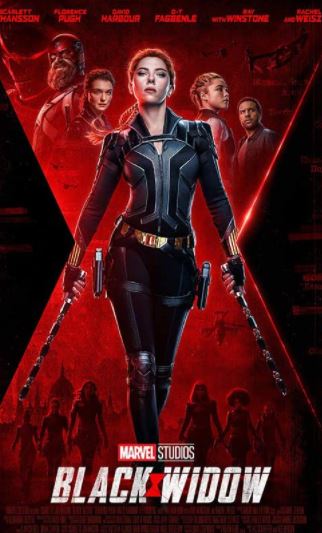
Where Does Black Widow Fit into the MCU Timeline?
As the Marvel Cinematic Universe grows with new movies and Disney Plus shows, figuring out how to fit the new Marvel content into the existing MCU timeline is a fun way to spend time. With the new Black Widow movie (it is fun, by the way!), we have two items to place into the MCU timeline.
Mild spoilers here, so be aware as you move forward…
The Past in Black Widow
The movie opens with a past event (well, basically almost the whole film is a past event, but, you know what I mean), that starts with Natasha Romanoff’s family living in suburban Ohio in the year 1995. How do we know it is 1995? The movie helpfully tells us, in big numbers on screen, what year we are in. By the way, props to Marvel for the creative and cool rendition of a major Nirvana song in the opening scenes. For those of you keeping score, yes, the opening of the Black Widow movie takes place the year after Kurt Cobain died.

Now, let’s place the scenes of Natasha’s childhood in context of the other Marvel movies. The Captain Marvel movie mostly took place in 1995. Some scenes from Carol Danvers’ past were clearly from prior years, but the bulk of the film, where Danvers first meets a two-eyed Nick Fury, takes place in 1995. Whoa, dude! That is the same year that Black Widow opens with. What is Marvel up to with this?
Nothing in the MCU is coincidental. Kevin Feige and his Marvel makers are meticulous in how they craft the ongoing soap opera that is the MCU. Both Black Widow and Captain Marvel have pieces that take place in the same year. There must be some tie-in between the events of both films that we cannot yet see. Ok, enough about 1995. Onward…

Closer to Modern Times in Black Widow
The opening scene concludes with some major history involving Natasaha and her family (see, no major spoilers here…) and then fast forwards to the adult Black Widow in a more modern setting as she eludes capture for breaking the Sokovia Accords (which is the major plot point of Captain America: Civil War). We learn that she is on the run, which, if you know your Marvel Civil War history, puts this scene (and the bulk of the movie) after she aids Captain America and Winter Soldier escape from Black Panther and Iron Man at the Berlin Airport.
A review of that movie after viewing Black Widow, shows us Tony Stark (who is still sporting a nice shiner from an earlier fight), warning Nat that Ross, who is the point man for enforcing the Sokovia Accords, will be after her. We do not see Black Widow anymore in the Civil War film after that scene. So that is where we are when we first see the adult Natasha on the run. In terms of year, that puts her, and most of the action in her movie in the year 2016.
Now, in the last in-movie scene (again, mild spoilers here), we see Nat taking delivery of a quinjet, with her hair shorter and dyed blonde, and she states to her supplier that she is going to break her friends out of prison. Again, upon reviewing the last in-movie scene of Captain America: Civil War, we see Cap at the Vault, the prison where Ross keeps super-prisoners, breaking out Hawkeye, Ant-Man, Falcon, and Wanda. We do not see Nat, but, given that the Vault is in the middle of the ocean, Cap needed a plane of some kind to get him there. We can now assume that Black Widow was piloting the quinjet and was a part of the prison break-out, though off-screen. This was a clever way to include her in the end of the Civil War movie, and also tie her into the little fugitive group that Cap put together.
In Conclusion
There you have it, True Believers! We have placed Black Widow’s 1995 and 2016 parts into the MCU timeline. Oh, and, if you have not seen it yet, yes, there is an after-credit scene.
Recent Comments